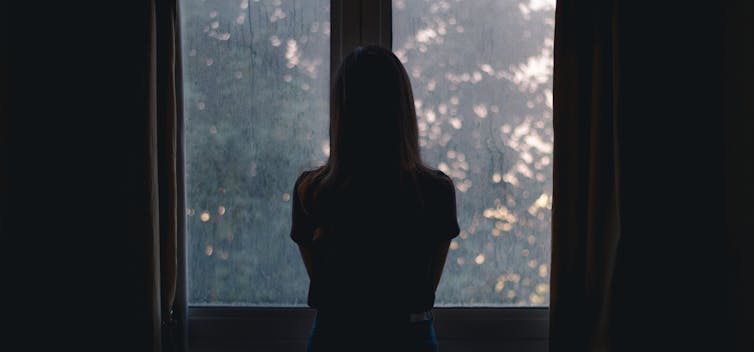Pushing ‘closure’ after trauma can be harmful to people grieving – here’s what you can do instead

From the breakup of a relationship to losing a loved one, people are often told to find “closure” after traumatic things happen.
But what is closure? And should it really be the goal for individuals seeking relief or healing, even in these traumatic times of global pandemic, war in Ukraine and mass shootings in the U.S.?
Closure is an elusive concept. There is no agreed-upon definition for what closure means or how one is supposed to find it. Although there are numerous interpretations of closure, it usually relates to some type of ending to a difficult experience.
As a grief expert and author of “Closure: The Rush to End Grief and What It Costs Us,” I have learned that the language of closure can often create confusion and false hope for those experiencing loss. Individuals who are grieving feel more supported when they are allowed time to learn to live with their loss and not pushed to find closure.
Why did closure become popular?
Closure is entrenched in popular culture not because it is a well-defined, understood concept that people need, but rather because the idea of closure can be used to sell products, services and even political agendas.
The funeral industry started using closure as an important selling point after it was criticized harshly in the 1960s for charging too much for funerals. To justify their high prices, funeral homes began claiming that their services helped with grief too. Closure eventually became a neat package to explain those services.
In the 1990s, death penalty advocates used the concept of closure to reshape their political discourse. Arguing that the death penalty would bring closure for victims’ family members was an attempt to appeal to a broader audience. However, research continues to show that executions do not bring closure.
Still today, journalists, politicians, businesses and other professionals use the rhetoric of closure to appeal to people’s emotions related to trauma and loss.
So what is the problem with closure?
It is not the mere presence of closure as a concept that is a problem. The concern comes when people believe closure must be found in order to move forward.
Closure represents a set of expectations for responding after bad things happen. If people believe they need closure in order to heal but cannot find it, they may feel something is wrong with them. Because so many others may tell those grieving they need closure, they often feel a pressure to either end grief or hide it. This pressure can lead to further isolation.
Privately, many people may resent the idea of closure because they do not want to forget their loved ones or have their grief minimized. I hear this frustration from people I interview.
Closure frequently becomes a one-word description of what individuals are supposed to find at the end of the grieving process. The concept of closure taps into a desire to have things ordered and simple, but experiences with grief and loss are often longer-term and complex.
If not closure, then what?
As a grief researcher and public speaker, I engage with many different groups of people seeking help in their grief journeys or looking for ways to better support others. I’ve listened to hundreds of people who share their experiences with loss. And I learn time and again that people do not need closure to heal.
They can carry grief and joy together. They can carry grief as part of their love for many years. As part of my research, I interviewed a woman I will call Christina.
Just before her 16th birthday, Christina’s mom and four siblings were killed in a car accident. Over 30 years later, Christina said that people continue to expect her to just “be over it” and to find closure. But she does not want to forget her mother and siblings. She is not seeking closure to their deaths. She has a lot of joy in her life, including her children and grandchildren. But her mom and siblings who died are also part of who she is.
Both privately – and as a community – individuals can learn to live with loss. The types of loss and trauma people experience vary greatly. There is not just one way to grieve, and there is no time schedule. Furthermore, the history of any community contains a range of experiences and emotions, which might include collective trauma from events such as mass shootings, natural disasters or war. The complexity of loss reflects the complexity of relationships and experiences in life.
Rather than expecting yourself and others to find closure, I would suggest creating space to grieve and to remember trauma or loss as needed. Here are a few suggestions to get started:
• Know people can carry complicated emotions together. Embrace a full range of emotions. The goal does not need to be “being happy” all the time for you or others.
• Improve listening skills and know you can help others without trying to fix them. Be present and acknowledge loss through listening.
• Realize that people vary greatly in their experiences with loss and the way they grieve. Don’t compare people’s grief and loss.
• Bear witness to pain and trauma of others in order to acknowledge their loss.
• Provide individual and community-level opportunities for remembering. Give yourself and others freedom to carry memories.
Healing does not mean rushing to forget and silencing those who hurt. I believe that by providing space and time to grieve, communities and families can honor lives lost, acknowledge trauma and learn what pain people continue to carry.![]()
Nancy Berns, Professor of Sociology, Drake University
This article is republished from The Conversation under a Creative Commons license. Read the original article.





